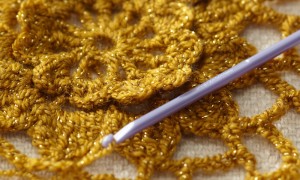Technical editor and yarncrafting expert Kj Hay joins us for a series on understanding the different elements of patterns. Click here to read her earlier blog posts.

There are some deceptively brief phrases used in prose instructions that have a powerful, agreed upon meaning. At first, you should approach patterns with such phrasing cautiously as they assume a higher level of knit or crochet knowledge.
This phrase simply means that the last row you work before proceeding to the next part of the instructions should be a RS row and that you should be ready to work a WS row when you begin the next part. Of course, the opposite is true for the phrase “end with a WS row.”
The first row or round following a “end with a WS row” or “end with a RS row” often indicate on which side the row or round is to be worked (e.g., Row 1 (RS)). Looking for this reminder can help you be sure to end on the correct side before beginning the next group of instructions.
This phrase is used when a pattern stitch has been used for the early part of a piece. It means that you should continue to work the pattern stitch as before but also make necessary adjustments to ensure that the stitches line up as they did previously. You probably won’t be able to simply follow the pattern stitch row instructions. Often increases or decreases are worked in some of the rows or rounds to shape the piece and therefore more or fewer stitches will need to be worked at the beginning and end of the rows or rounds to ensure that the stitches continue to line up as previously. Being able to “read” your stitches makes maintaining a pattern “as established” much easier.
This phrase is used most often to indicate that different shaping (increasing or decreasing) is to be worked on each of the two edges of the piece. The first set of shaping instructions are worked at the beginning of a row and the second set of shaping instructions are worked at the end of the same row. This most commonly occurs when working armhole shaping on one edge and neck shaping on the opposite edge. It is also possible to need to perform three or more types of shaping AT THE SAME TIME.
Whenever you see an AT THE SAME TIME, read ahead in the instructions to ensure that you understand all sets of shaping instructions. If you do not read ahead, you are likely to make the common mistake of working all of the armhole shaping before beginning the neck shaping, and doing so will make your piece the wrong shape and too long.
A piece of graph paper can help when working shaping AT THE SAME TIME. Before beginning your shaping, sketch out the decreases or increases for both sets of shaping on the piece of graph paper, using one line of graph paper to represent each row and one box to represent one stitch.
There are some smarttphone apps now available to help keep track of multiple sets of shaping instructions that are to be worked AT THE SAME TIME.
Studying a schematic, if provided, can help you visualize shaping that is to be worked AT THE SAME TIME.
The left front of a garment is often the mirror image of the right front. Accordingly, the instructions for the right front are a mirror image of the instructions for the left front. In other words, whenever a decrease or increase is worked at the beginning of a row when making the left front the equivalent decrease or increase is worked at the end of the same row when making the right front. Some patterns will not provide detailed instructions for the front piece that is the mirror image of the front piece for which instructions have already been given. Instead the phrase “reverse shaping” is used to indicate that you should follow the instructions for the previous front piece, but work the shaping on the opposite ends of the rows to create a mirror image.